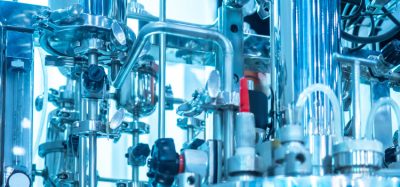Siemens: innovation, industry and implementation
Posted: 19 June 2008 | Ingrid Maes, Siemens Centre of Competence, Antwerp | No comments yet
Siemens seeks to deliver breakthrough innovations to give customers a unique competitive edge, in turn enabling societies to master their most vital challenges and creating sustainable value. Siemens was one of the first suppliers to adopt the new guidelines of the Food & Drug Administration (FDA) and the European Agency for the Evaluation of Medicinal Products (EMEA), and already possesses in-depth knowledge of the technology needed to achieve desired results within these industry codes and in accordance with the latest GMP requirements. Moreover, Siemens is also an active member of the worldwide pharmaceutical community contributing to the design of new solutions for meeting growing business and production demands. Ingrid Maes from Siemens Headquarters, talks to European Pharmaceutical Review about innovation, industry and implementation.
Siemens seeks to deliver breakthrough innovations to give customers a unique competitive edge, in turn enabling societies to master their most vital challenges and creating sustainable value. Siemens was one of the first suppliers to adopt the new guidelines of the Food & Drug Administration (FDA) and the European Agency for the Evaluation of Medicinal Products (EMEA), and already possesses in-depth knowledge of the technology needed to achieve desired results within these industry codes and in accordance with the latest GMP requirements. Moreover, Siemens is also an active member of the worldwide pharmaceutical community contributing to the design of new solutions for meeting growing business and production demands. Ingrid Maes from Siemens Headquarters, talks to European Pharmaceutical Review about innovation, industry and implementation.
Siemens seeks to deliver breakthrough innovations to give customers a unique competitive edge, in turn enabling societies to master their most vital challenges and creating sustainable value. Siemens was one of the first suppliers to adopt the new guidelines of the Food & Drug Administration (FDA) and the European Agency for the Evaluation of Medicinal Products (EMEA), and already possesses in-depth knowledge of the technology needed to achieve desired results within these industry codes and in accordance with the latest GMP requirements. Moreover, Siemens is also an active member of the worldwide pharmaceutical community contributing to the design of new solutions for meeting growing business and production demands. Ingrid Maes from Siemens Headquarters, talks to European Pharmaceutical Review about innovation, industry and implementation.
Challenges needed for PAT / Quality by Design (QbD) implementation
Maes begins, “The biggest challenge remains the psychological one of moving from a world where regulatory guidelines told companies what to do on a step by step basis to a regulatory environment where only the end-point is defined and companies have to set their own path as to how to get there. It requires a cultural and mindset change but it is fundamental to getting the most from automation solutions. Many companies are only at the first step of considering automation with fairly limited horizons, such as just adding a process analyser to a single process, rather than looking at how it can be used in a truly integrated way to revolutionise validation, plant flexibility, process control and supply chain management.”
So how are most pharmaceutical companies currently working? “Pharma companies tend to work with ‘islands of automation’ where every unit of operation is more or less independent from an integration point of view,” comments Maes. “Changing to an integrated approach, which is standard in many other industries, is a big step for pharma companies. We find that companies are excited once they succeed with integration but find it difficult to be convinced beforehand, simply because it is outside of their experience.”
What would your advice be to a company who wanted to change their current working format? “An important way in which companies can overcome these barriers is to ensure that their approach to manufacturing innovation and efficiency is driven by a clear vision of where they want their manufacturing and wider company activity to be in, say, ten years time, based on the products that are currently in their respective pipelines” Maes continues, “By necessity such a vision needs to be driven by all parts of the business and, because of this, can help break down silo working.”
Moving forward
Maes explains that, “Companies will move away from batch manufacturing with ‘after the event’ offline product testing to fully automated, and integrated continuous manufacturing with quality designed into the process. Disposable manufacturing technologies will also hasten time to market. Such technologies provide a greater degree of flexibility, both in terms of scale and location and ease of use for operations.”
What are the main benefits in using micro technology? “Cell chips are enabling the study of the reaction of an individual cell on different process conditions through the miniaturisation of different kinds of analytics and detectors,” explains Maes. “Micro reaction technology permits the synthesis of active pharmaceutical ingredients on a small-footprint, lab-bench scale. Also, this micro-scale will work for both development scale and manufacturing scale, eliminating the need for up scaling and technology transfer. Because of continuous mode production, the same annual product volume can be produced as when using larger scale batch methods.”
How can companies begin to close the gap between development and manufacturing? “By introducing three important resources – data portals which allow accessing various data sources (from R&D to manufacturing) for data mining, to reveal additional knowledge and understanding, consequently this knowledge and increase in insight can be kept track of and stored in Knowledge Management (KM) systems, as part of the Product Lifecycle Management (PLM) tool, allowing to manage improvements in product, process and quality specifications.– development and manufacturing can begin to integrate. It is important for information to flow from R&D to manufacturing but also vice versa. Knowledge gained through manufacturing can, thus, be reused to accelerate the development process as new products have to be designed.”
What Siemens’ products aid this process further? “A range of other innovative technologies complete the picture,” explains Maes. “Simatic PCS 7 Lab is a recently launched process control system that allows automation in laboratories, small process equipment or pilot equipment. Siprocess provides micro process technology with integrated sensor and process control functions and a standard that gives companies the chance to introduce this technology more quickly for broad application in the laboratory and successful transfer to industrial production levels.” How specifically does this benefit your clients? “This can transform yields and enhance the ability to move to more flexible, continuous production. Finally, Sipat enables companies to link all their analysers and Process Analytical Technology tools into one single system architecture. Sipat will play a vital part in helping companies move from offline to online activity and then on toward a full real-time product release capability. It forms part of the process control system Simatic PCS 7, tightly integrated with Simatic Batch and EBR (Electronic Batch records) functions.”
Final thoughts
“Looking ahead, the next 10-15 years will see a major transformation of pharmaceutical manufacturing.” Maes continues, “The way we have seen quality by design through PAT introduced over the past five years or so is just the first step. Thus far, much of the focus has been on process understanding and control. Ultimately, however, quality by design will really mean linking manufacturing quality control directly to bioavailability or clinincal performance or how the drug works in the individual patient. Many other technological advances, such as biomarkers and cell chips, will play a role, to further improve the understanding of processes and more specifically the impact of process parameters on the therapeutic performance of products.”
Issue
Related topics
Interviews, Process Analytical Technologies (PAT), Quality by Design (QbD)









